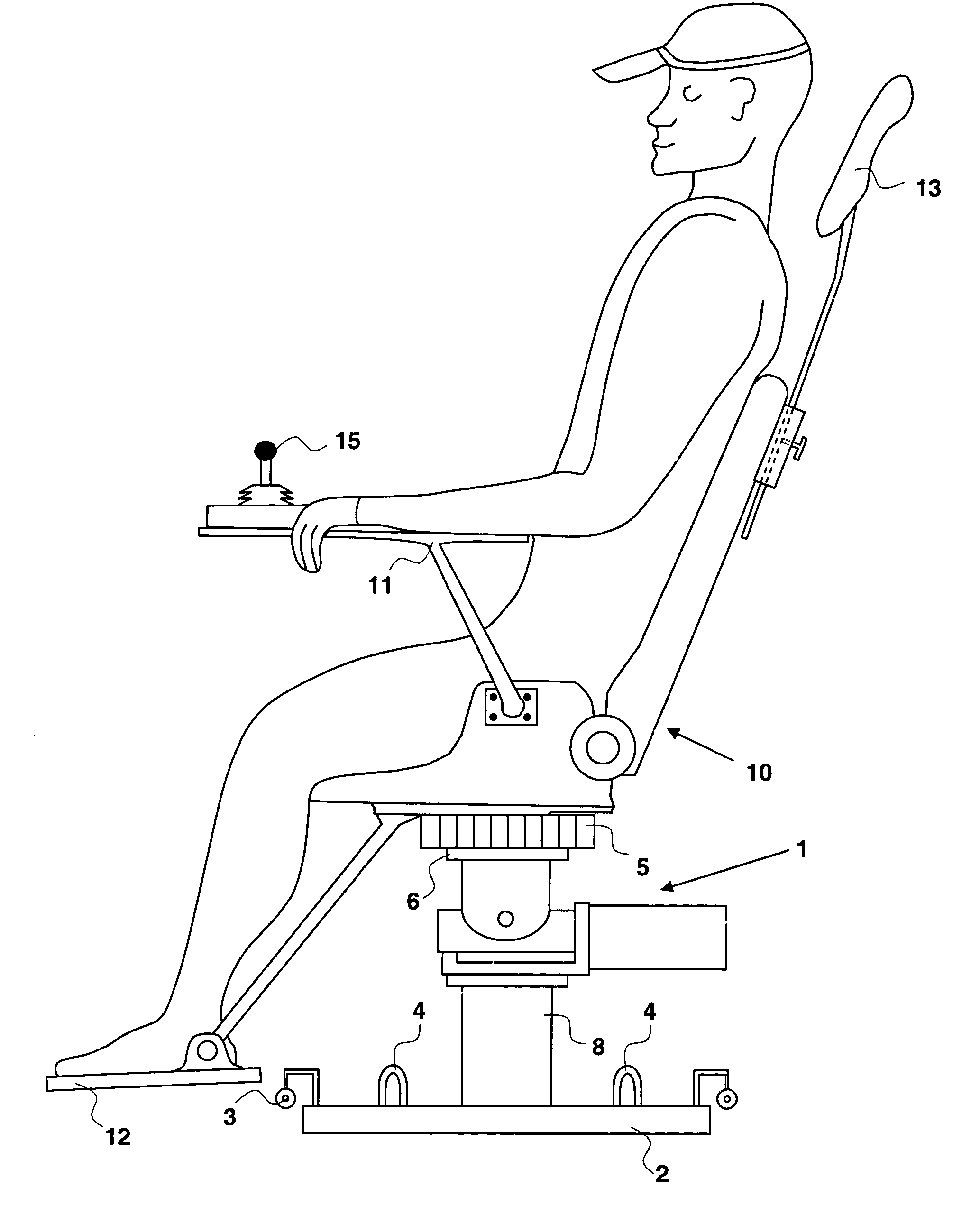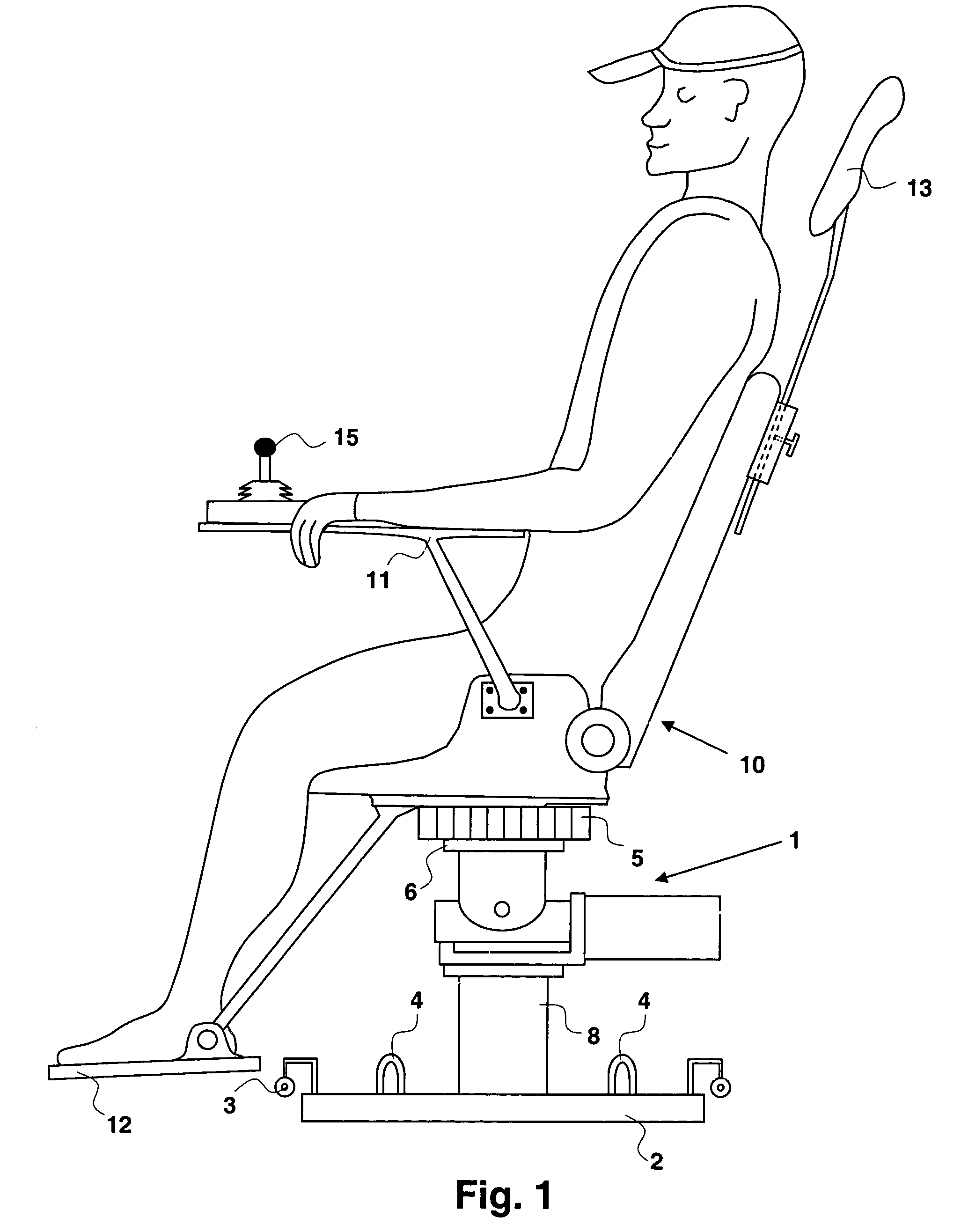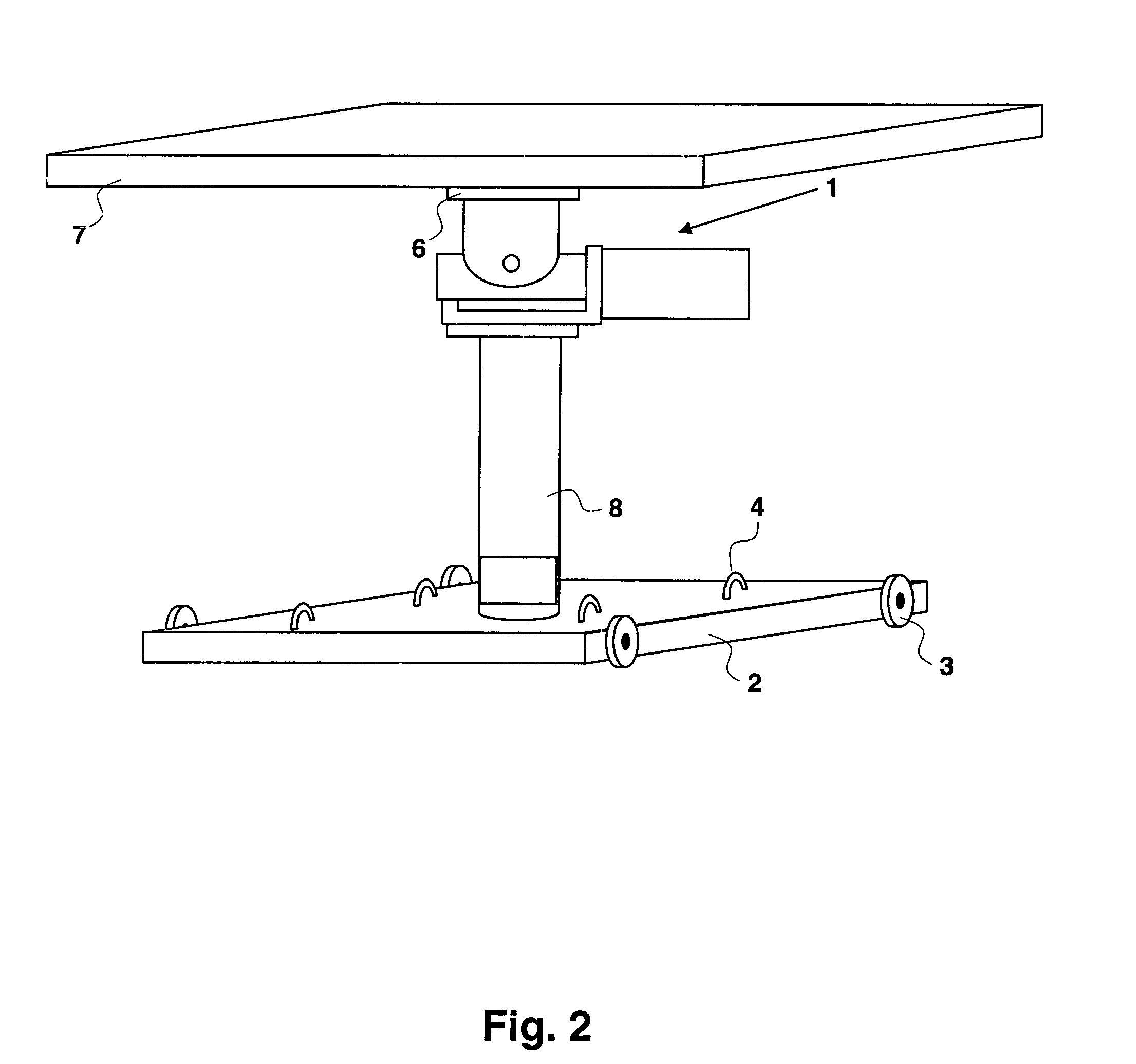Autonomous, self leveling, self correcting anti-motion sickness chair, bed and table
a self-leveling, anti-motion sickness technology, applied in the direction of instruments, machine supports, crew accommodation, etc., can solve the problems of sensor output variation, poor stability, and poor stability of the well
- Summary
- Abstract
- Description
- Claims
- Application Information
AI Technical Summary
Problems solved by technology
Method used
Image
Examples
Embodiment Construction
.
[0039] FIG. 1 illustrates an anti-motion sickness chair. According to this embodiment, the stabilization device 1, such as that described in Grober patent Ser. No. 09 / 579,723, Autonomous, Self Leveling, Self Correcting Stabilized Platform, is directly attached by base plate 2 to a vessel or vehicle deck. Optional wheels 3 can also be used for mobility and should have a locking device or attachment hardware 4 to secure the anti-motion sickness chair to the deck. The stabilized platform 6 is attached to the optional azimuth motor / gear drive unit 5. Chair 10 is fixed to the azimuth motor / gear drive unit 5. Support post 8, is attached between the stabilization device 1 and the base plate 2, and can be variable lengths depending on the particular application and for user comfort. An armrest or small table 11 can be attached to chair 10, providing a stable working surface for the occupant. A footrest 12 and headrest 13 can also be added.
[0040] The operator control device 15, gives the oc...
PUM
 Login to View More
Login to View More Abstract
Description
Claims
Application Information
 Login to View More
Login to View More - R&D
- Intellectual Property
- Life Sciences
- Materials
- Tech Scout
- Unparalleled Data Quality
- Higher Quality Content
- 60% Fewer Hallucinations
Browse by: Latest US Patents, China's latest patents, Technical Efficacy Thesaurus, Application Domain, Technology Topic, Popular Technical Reports.
© 2025 PatSnap. All rights reserved.Legal|Privacy policy|Modern Slavery Act Transparency Statement|Sitemap|About US| Contact US: help@patsnap.com



